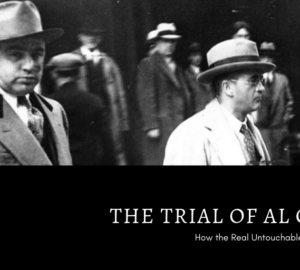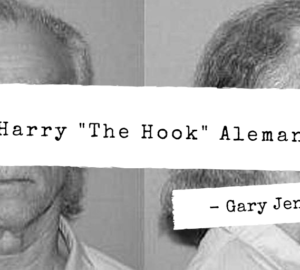This is the first of a 4-part series documenting the life of a Chicago Outfit thief, enforcer, juice loan collector and killer named Harry “The Hook” Aleman.
He was born Harry Peralt Alemen on January 19, 1939 in Chicago. He has been accused of as many as 18 murders by the Chicago Crime Commission and most folks believe that number is way low. He was an important tool in the Outfit’s enforcement of street tax on bookmakers and other gray area businesses like porn shops and the bar business. Chicago Outfit associate and government agent Red Wemette described Frank “the Geman” Schweisch as the collector and enforcer for Joe Lombardo and the Grand Avenue Crew. Well, Harry “The Hook” Aleman was a similar collector and enforcer for Joe Ferrolia and the Taylor Street Crew.
Aleman’s mother was Italian, his Mexican father was a native of Durango, Mexico. Aleman’s maternal grandmother was of Sicilian heritage and she owed a 3-floor brownstone style building at 917 S. Bishop Street in Chicago. All her extended family of uncles, aunts and cousins lived in and around this house in a neighborhood just west and south of Chicago’s Loop. Years later in a probation interview Harry Aleman described his father Louis Aleman as “sort of a Mexican godfather” who was allegedly involved in narcotics trafficking. His mother Mary was an abused wife and Harry would become the target of his father’s angry fists as he grew up. Harry once stated, “My father was hard on me, extremely hard. He beat me every day until I left home. He used his fist or a horsewhip. If I looked at him the wrong way, he beat me. If my mother stepped in, she got hit herself.”
Harry was given a respite from his father’s abuse when Louis Aleman went to prison for a 4-year robbery bit from about 1946 to 1950. Young Harry Aleman excelled at Crane Tech high school from 1951-1955. He was a halfback on the football team, a member of the physics club and took up boxing at the North Side Duncan YMCA club. His boxing career gave him his nickname “The Hook” because he had a devastating left hook. He graduated in 1955, rare for a hoodlum of that generation, and enrolled in the Chicago Academy of Fine Arts and graduated in 1958 with a commercial art diploma. It seems that Harry Aleman had displayed skill at painting and this ability will provide him with something do during his subsequent incarcerations.
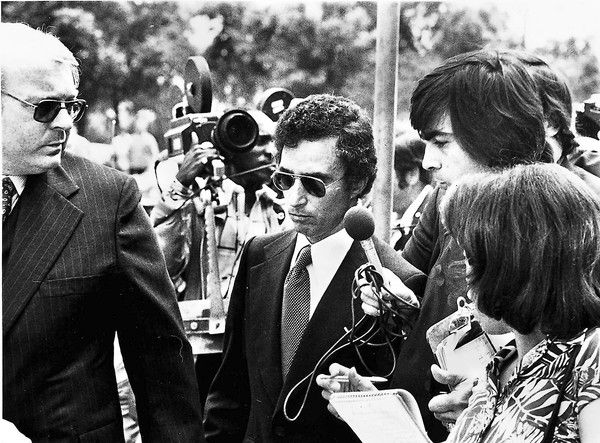
Aleman’s official police record starts after graduation from the Academy of Fine Arts. He told a probation officer that during this time he sold race track tout sheets and worked at the produce markets on the Near West Side, where he sold produce and was able to sell some of his drawings. In 1960, Chicago police arrested Aleman for malicious mischief; in 1961 for gambling; in 1962 for possession of burglary tools, assault and criminal damage. In 1965 police arrested Aleman for aggravated assault. In 1966, he was charged with grand theft auto and armed robbery. In 1968, the police arrested him for criminal damage to property and in 1969 for aggravated kidnapping.
In 1960, Harry became infatuated with a beautiful young spunky widow named Ruth Mustari who worked at a Rush street bar. When he first met Ruth, she was having trouble with a former boyfriend named Richard Fanning. On December 10, 1960, Mr Fanning was found beaten and stabbed to death near his South Side home. In 1964, Aleman married Ruth Mustari, a widow with four children. Ruth’s first husband, Frank Mustari, had been an Outfit connected mobster as well. He was killed in 1957 in an attempted murder of a hijacker and tavern owner. In this case, his victim was armed and shot first. The man was killed a few months later. Ruth was the ultimate mob wife. She always stood by her husband’s story that he was a commercial artist and she always maintained that the family was dead broke most of the time. A great story showing how Ruth was the classic mob wife happened in 1976. Harry Aleman was indicted for the murder of Billy Logan, Ruth came to the Cook County Jail with a suitcase containing $350,000 to bail him out, not realizing that she needed only $35,000.
In later years a friend of Harry’s named Lou Almeida went into the witness protection. Almeida who has served time for armed robbery, grand theft, burglary, and bond jumping, recalled that he and Aleman grew up together near Taylor Street and Racine. He remembered how Aleman met his wife, Ruth. She was working in a State Street nightclub club and all the neighborhood guys loved Ruth because she was so beautiful. He remembered Harry as a very slim physically fit guy who wore sharp suits and skinny little ties in the fashion of the times and they called him `The Sheik’ because he dressed nice. Almeida recalled. “Everybody looked up to him because his family was supposed to be in the Mafia.” The two young hoodlums hung around in the neighborhood pool hall on Taylor Street. He remembered Harry liked to bet on the horses and he always had money and nice jewelry and clothes. Almeida said He remembered that Aleman was a strict father to his adopted children. On one occasion Almeida remembers that Harry asked him to give one of his adopted sons a good beating because the kid was getting drunk and staying out late. Harry didn’t want to beat him up because Ruth would be angry.
The couple had no biological children, and in later years Ruth Aleman once said, “He was wonderful to my children, He took the kids to Kiddieland, to dinner, on picnics, camping. He always had time for the kids. In the Cook county probation interview Harry said of his step children, “I raised them, I consider them my own. I couldn’t be any closer if they were my own blood. I love my kids. I love my wife. I have six grandkids–this gives me hope.” She would say that Harry always came home for dinner and asked the children about their day and how they were doing.
In his 20s, Harry Aleman was well known on the near north side of Chicago as a vicious guy who had no fear and did not back down. In 1962 Aleman, his brother Freddie and two other men were in a bar on North Rush Street and became involved in an altercation. Witnesses saw Aleman push a woman through a plate glass window. This witness was Howard Pierson, the 23-year-old son of the commander of the Chicago police robbery section. Pierson claimed he chased Aleman and his friends out of the bar and flagged down a police car. The passing officers caught up with Aleman and were questioning them when Howard Pierson caught up. Knowing that Pierson was the guy who told the cops, Aleman, without warning, sucker punched Pierson with his famous left hand and broke his jaw. For that incident, Aleman received two years’ probation.
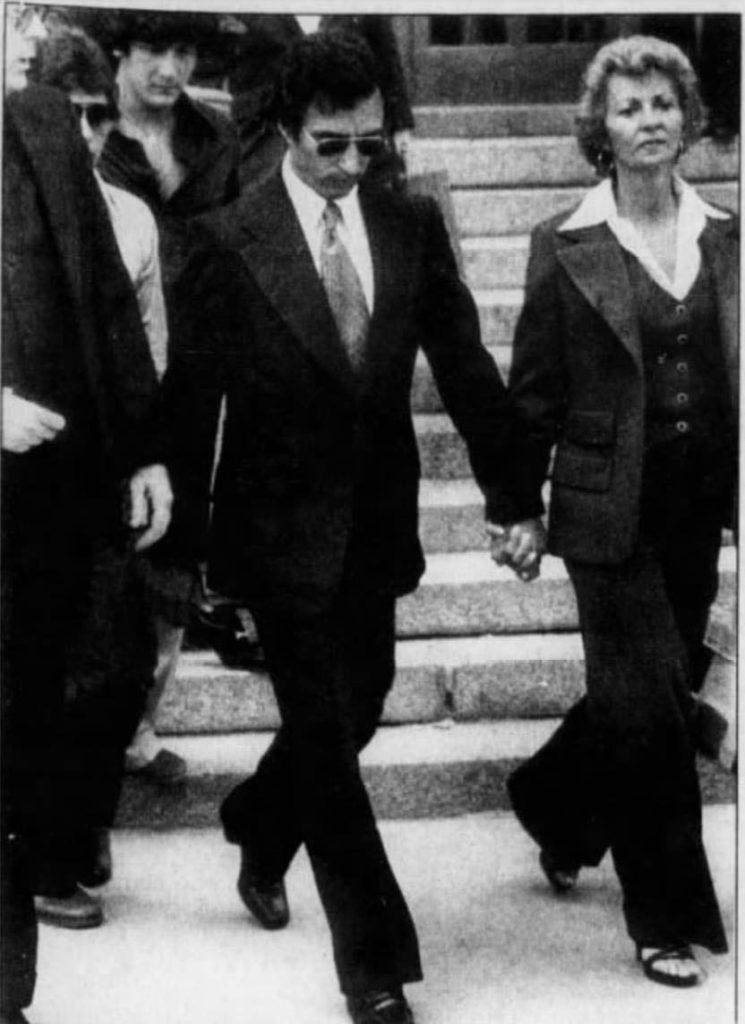
Joe Ferriola, a man who would eventually rise to become the boss of the Outfit, had married the sister of Aleman’s mother. Ferriola took the young Aleman under his wing and as Ferriola continued to rise in the mob, so did Aleman. He joined up with the so-called Taylor Street crew with Butch Petrocelli, Louis Almeida, Leonard Foresta and James Inendino. The group made their headquarters the Survivor’s Social and Athletic Club, on Taylor Street just west of Racine Avenue in Chicago’s Little Italy. In the 1970s, Ferriola instructed his Taylor Street crew “to organize Chicago the way it was back in the ’30s and ’40s.” What he meant was he wanted them to identify and contact all known neighborhood gamblers who earned a living at sports booking, off track race betting or any other forms of gambling. As an added source of income, Aleman and the others started to commit home invasions and burglaries. The crew turned all proceeds over to Ferriola and he paid each crew member $500 for his work. During this time Joe Ferriola became the Outfit’s underboss, he instructed all Outfit crews to extract a street tax from all independent bookmakers for the right to operate.
Although he was slightly built, 5 feet 8 inches tall and 145 pounds, Aleman became so feared in underworld circles in the 1970s that small time hoodlums trying to collect gambling debts simply invoked his name to collect. Two Chicago loan sharks were convicted of extortion and sent to prison in 1978 for collecting a $6,500.00 debt from a South Side tavern owner by saying that Aleman would come after him if he didn’t pay. Prosecutors said it was a ruse and Aleman was not involved in any way.
Harry the Hook teamed up with a childhood friend named Butch Petrocelli. The team hung out at the Survivors Athletic Club on Taylor street. This was the kind of mobster social club you see in the movies. The cappuccino machine was always going. In the winter the men sat around tables and talked or played cards. As the weather warmed up, by summertime, the dangerous looking inhabitants were standing out front wearing wife beaters or polo shirts and sansabelt slacks. Inside Petrocelli and Aleman developed skills as bombmakers by packing 2-inch pipes with black powder and a little nitroglycerine. These were used to get the attention of any businessman who refused to cooperate with the gang.
This duo first came to the attention of law enforcement in 1969. A painting contractor told FBI agents that he had lost $6,000.00 to an Outfit bookmaker and he had been threatened with death if he did not pay the “Vig” on the debt because they converted this debt to a juice loan. He had been accosted by two men who beat him up, threatened to bomb his house and kill his wife. The contractor planned to meet these two extortionists and make a payment and alert nearby agents. When he arrived at the preselected meeting spot, the agents caught Harry Aleman and Butch Petrocelli parked nearby. The victim identified them as the two men who had beat and threatened him. A grand jury was presented this evidence and no indictment was ever returned. This would not be the first case against Harry Aleman that just disappeared inside the Cook county judicial system.
Harry Aleman will never be a made guy and never be a boss, but he will become the leader of home invasion crews, hit teams, keep the Taylor Street’s Crew’s bookies in line and collect from loan shark victims who were behind.
The Chicago Tribune, Everybody Pays by Maurice Possley and Rick Kogan provided many of the material for this article.
About the author:
Gary Jenkins retired from the Kansas City Police Department in 1996 after a 25-year career. Gary attended the UMKC School of Law and graduated in 2000. He was admitted to the Missouri Bar and he continues to practice law today. He is a Board member of the Kansas City Police Pension System and The Jackson County Historical Society. During the past 10 years, Gary produced three documentary films. The first two were Negroes To Hire: Slave Life in Antebellum Missouri and Freedom Seekers: Stories From the Western Underground Railroad.
Gangland Wire is Gary’s third documentary film. During Gary’s KCPD career, he was assigned to the KCPD Intelligence Unit, investigating organized crime. In the 1970s, a grass roots development in the City Market area, became known as the River Quay. A Mafia dispute over parking rights and strip clubs would destroy the area. The resulting investigation will allow F.B.I. agents to convict La Cosa Nostra leaders in Kansas City, Chicago, Cleveland and Milwaukee. Former KCPD Detective and filmmaker Gary Jenkins tells this story as only an insider could, using excerpts from wiretaps and interviews with participants.
Additionally, Gary created a Smartphone app titled Kansas City Mob Tour. This app utilizing maps, text, photos and video conducts the user on a tour of famous Kansas City mob sites.
Gary produces and co-hosts a podcast titled Gangland Wire Crime Stories. Using the audio podcast format, Gary tells true crime stories from his experience and obtains guests who have either committed crimes, investigated crimes or reported on criminals.
Gary’s most recent project is his book documenting the investigation into Las Vegas skimming activities. Gary uses actual wiretap transcripts to tell the story of this investigation. The book is titled Leaving Vegas: The True Story of How the F.B.I. Wiretaps Ended Mob Domination of Las Vegas Casinos.
- The Trial of Al Capone – How the Real Untouchables Brought Him Down - March 24, 2019
- Harry “The Hook” Aleman: Chicago Outfit Enforcer (Part 4) - January 17, 2019
- Harry “The Hook” Aleman: Chicago Outfit Enforcer (Part 3) - January 10, 2019





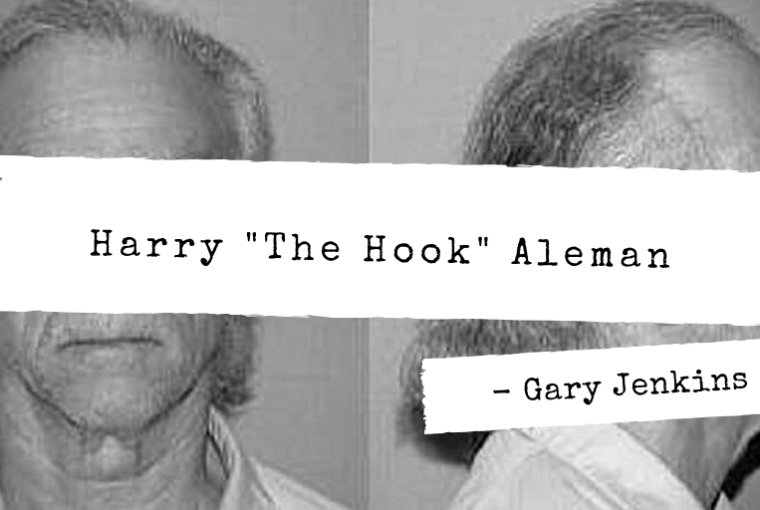
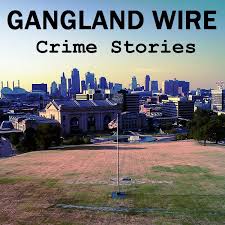 Part 1
Part 1